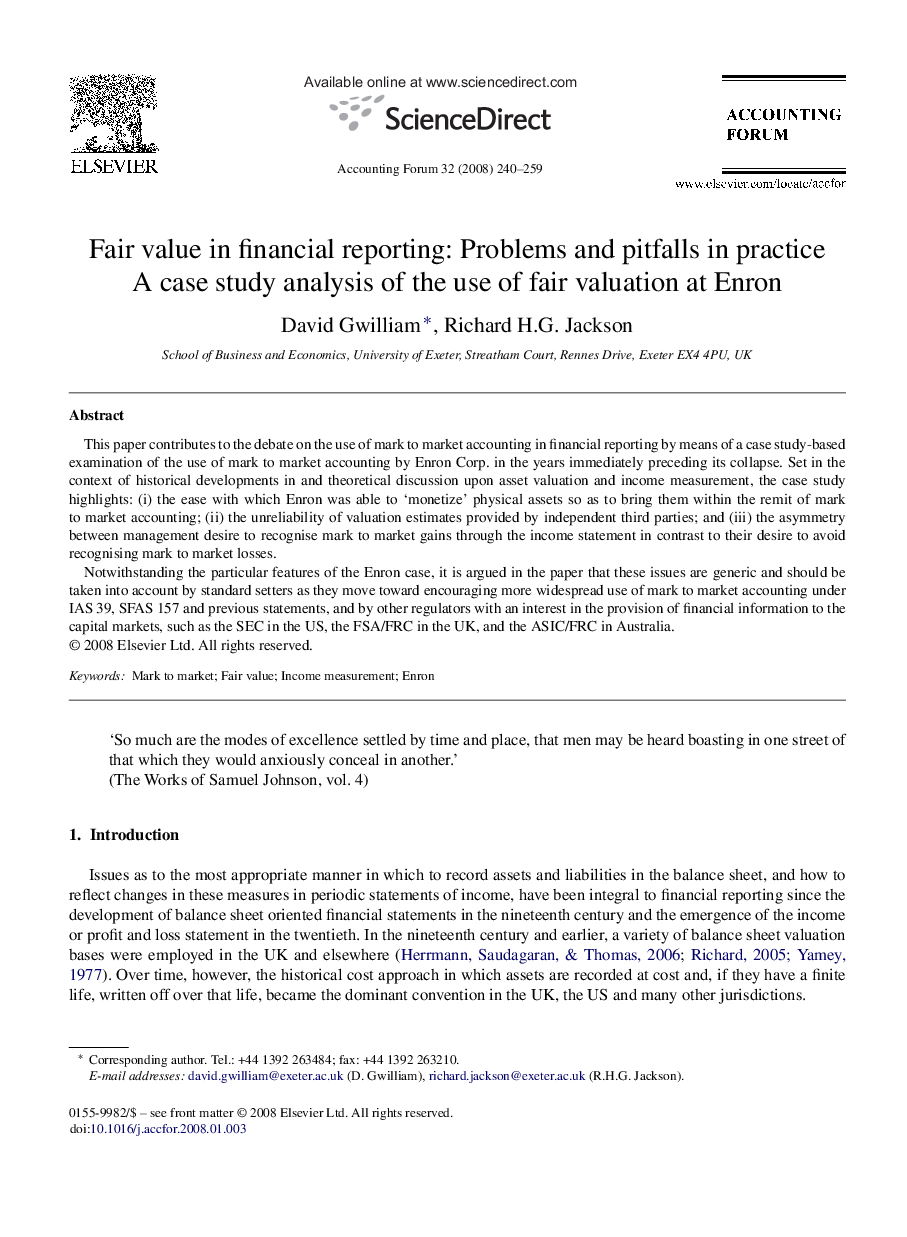| Article ID | Journal | Published Year | Pages | File Type |
|---|---|---|---|---|
| 1003858 | Accounting Forum | 2008 | 20 Pages |
This paper contributes to the debate on the use of mark to market accounting in financial reporting by means of a case study-based examination of the use of mark to market accounting by Enron Corp. in the years immediately preceding its collapse. Set in the context of historical developments in and theoretical discussion upon asset valuation and income measurement, the case study highlights: (i) the ease with which Enron was able to ‘monetize’ physical assets so as to bring them within the remit of mark to market accounting; (ii) the unreliability of valuation estimates provided by independent third parties; and (iii) the asymmetry between management desire to recognise mark to market gains through the income statement in contrast to their desire to avoid recognising mark to market losses.Notwithstanding the particular features of the Enron case, it is argued in the paper that these issues are generic and should be taken into account by standard setters as they move toward encouraging more widespread use of mark to market accounting under IAS 39, SFAS 157 and previous statements, and by other regulators with an interest in the provision of financial information to the capital markets, such as the SEC in the US, the FSA/FRC in the UK, and the ASIC/FRC in Australia.
